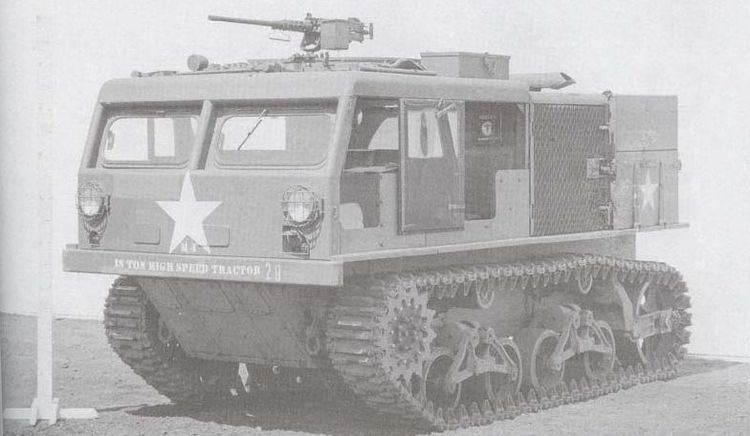Type Artillery tractor In service 1943–1960 Wars World War II | Place of origin United States Used by US Army
Belgian Army Designed 1942 | |
 | ||
The M4 High-Speed Tractor was an artillery tractor used by the US Army from 1943.
Contents
Design and development
The M4 was based on the chassis and drive train of the obsolescent M3 Light Tank which introduced the trailing idler. This common practice of re-using old vehicles simplified design, allowed for easy production, and made maintenance in the field easier.
One variant was designed to tow anti-aircraft guns and another for howitzers. The rear compartment carried the gun crew and other equipment and some later variants included a crane to assist with heavier projectiles.
Two types of ammunition boxes were used on all models: a 90 mm box with side "tailgates" to access 90 mm shells pigeon-holed in the sides, and a combination box for 155mm / 8-inch / 240 mm ammunition with a rear tailgate, and hoist.
History
The M4 was manufactured by Allis-Chalmers of Milwaukee, starting in 1942 and was in U.S. military service until approximately 1960. Under the Mutual Defense Assistance Program, the M4 was supplied to Greece, The Netherlands, Japan, Brazil, Yugoslavia and Pakistan after World War II ended. In the Indo-Pakistani War of 1965 the Pakistani Army used the M-4 Tractor to haul M115 Howitzers to the battlefield of Chamb and then to the Lahore front.
Variants
Civilian use
After the war many types of these tractors were stripped of their military components and used for log skidders and power line construction. Many were used as carriers for rock drills, used in logging road construction in British Columbia. The first prototype was designed in the early 1960s by G.M. Philpott Ltd. of Vancouver, BC, and Scott-Douglas Industries, who supplied the M4 Carrier. It was used by MacMillan, Bloedel, and Powell River Company at their Juskatla, BC logging operation. Many improvements were made and when Finning Tractor later bought G.M. Philpott, the machine became the Finning Tank Drill. At least 500 were built, many of which are still in service. The original Finning Tank Drill was replaced by the M32F and M40F Tank Drills, which used larger Sherman tank carriers. At Amsterdam Airport Schiphol in the Netherlands, at least two refurbished M4s were used by the airport fire brigade in the 1960s and '70s.
